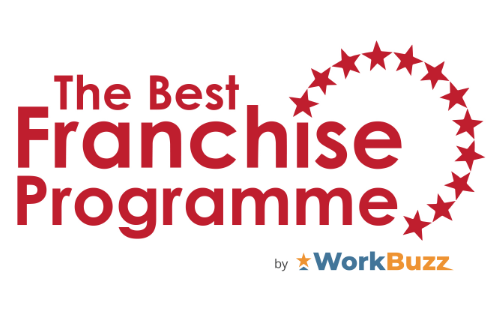As we move into a post-pandemic world, the continued success of QSR chains shows that consumer demand remains strong, and we can be confident it isn’t going away – but it is changing in nature. Market research group Mintel found that nearly a quarter of people in the UK are spending more on food deliveries than before the pandemic, showing that delivery popularity is a well-established trend, even now that dine-in is an available option once more.
In order to remain relevant and competitive, QSR businesses need to tune into the evolving desires of consumers – everything from where they want to eat, to what and how. The QSR category not only survived, but thrived, during the challenges of the pandemic, but it must not become complacent.
QSR brands need to harness their ability to adapt quickly and nimbly, meeting the consumer’s needs head on. For me, there are three keyways QSR brands can achieve success in this context.
Redefine how we think of flagship restaurants
Flagship restaurants have traditionally been considered those with large floorspace in central locations. When we think of a flagship location, we think of a restaurant on Oxford Street in London, but the reality for restaurants such as these in a post-Covid world is that they are extremely high in rent and rarely produce the return in sales to justify the outlay. They look great and make a splash, but they often have a very short lifespan because they’re addressing traditional expectations, rather than current consumer needs.
With people working from home and spending less time in large cities, brands need to adjust to the changes in consumer movement and show up where their customers are.
For example, right now, that is more likely to be the commuter belt around London than it is on Oxford Street. This means that a high-performing restaurant in a commuter town may be more likely to produce bigger revenue and returns than a restaurant in the capital, and so how we think of the term ‘flagship’ needs to evolve. Tim Hortons have done this successfully with its recent opening of a Drive Thru store in Milton Keynes, and it is a trend we can expect to continue. Brands must adapt. Take our own experience with our restaurant in La Garde, France – it is not a city center location, but it perfectly suits the needs of its target audience and has quickly become one of our best performing restaurants in Europe. By offering dine-in experiences alongside takeaway, drive-thru and delivery services, this restaurant has maximized its space to create the most effective Carl’s Jr. presence for its guests, catering to their needs in a variety of formats. This is exactly how we should be thinking about the physical presence of QSR moving forward – not necessarily traditional ‘flagship’ sites.
The quality of the restaurant’s design also plays into this, amidst a wider desire for quality experience and quality products. But the overarching future of the QSR industry must focus on meeting guests’ needs where they want to be met, not where they expect to see a brand show up.
Dining in remains the premier experience
The increase in delivery service orders was an inevitability during lockdown when people couldn’t leave their homes, but since restaurants have reopened, we’re seeing that the experience of dining in-restaurant remains a strong priority for consumers. Hospitality and the restaurant experience will never die out – we have been eating meals out for a lot longer than delivery services or takeaway options have existed – and its popularity remains as strong as ever. As we look to the future, I do not see this waning, either so brands can be optimistic about the future of the dine-in experience.
Food temperature continues to be a challenge for delivery services, with meals often arriving at their destination colder than is enjoyable. Take fries as an example, a hot, fresh, crisp portion of fries is a delight, but a lukewarm portion is much less appealing. Despite years of attempts at innovation, no QSR restaurant has completely discovered the secret to delivering restaurant quality food.
Eating a burger that has come straight off the grill and been served to your table is an experience that cannot be matched by delivery services, so it naturally encourages more of a dine-in custom. We see this reflected across our restaurants in Europe, with Denmark, Spain, and France all currently operating with dine-in as the highest proportion of their business, with up to 70% of customers dining in.
To continue thriving in the future, QSR brands must create an in-restaurant experience that is somewhere customers want to be. Particularly following the pandemic, consumers are looking to have social moments with friends in settings that they could not enjoy during the lockdowns, and it’s clear to see how in-restaurant experiences fit the bill here. With the right culture and atmosphere, combined with appealing design, QSR restaurants have a real opportunity to increase their share of dine-in consumers.
Aggregators aren’t everything
A major evolution in the QSR industry over the past five years has been the emergence of aggregators like UberEATS and Deliveroo, taking food delivery services one step further. But we should expect to see a shift in how these businesses are operating. Having emerged as a lifeline for many during the pandemic, these businesses have experienced an intense surge in demand – from businesses and customers alike – but their returns have not proven their long-term potential. We can expect to see a rapid evolution in the services aggregators offer in the next few years, particularly as we see increased online, curbside pick-up and takeaway offerings from brands.
With this in mind, QSR brands should be strategic as they develop their business models around aggregators. Consumer skepticism around the activities of those brands remains rife, and increasingly we can expect to see brands host their own delivery service, where they can control more factors such as the speed of delivery, the packaging used and their volume of delivery orders. Carl’s Jr. is testing this in Spain, and while we’re a long way off rolling the service out across our full business network, it has proved a successful endeavor. As the role of aggregators evolves and we see increased prices passed on to businesses and consumers, it will be interesting to note how the QSR industry reacts. I would not be surprised to see a seismic shift in the next decade.
All three of these are underpinned by the core necessities for customers: accessibility and quality. This must be the key focus for QSR brands because it is where consumers’ heads are at right now, and it’s vital to address their demands.
Consumers are asking for high-quality products and premium experiences in accessible locations, and for QSR brands like ourselves, there is a great opportunity to capitalize on this in the UK market in the coming years.

































